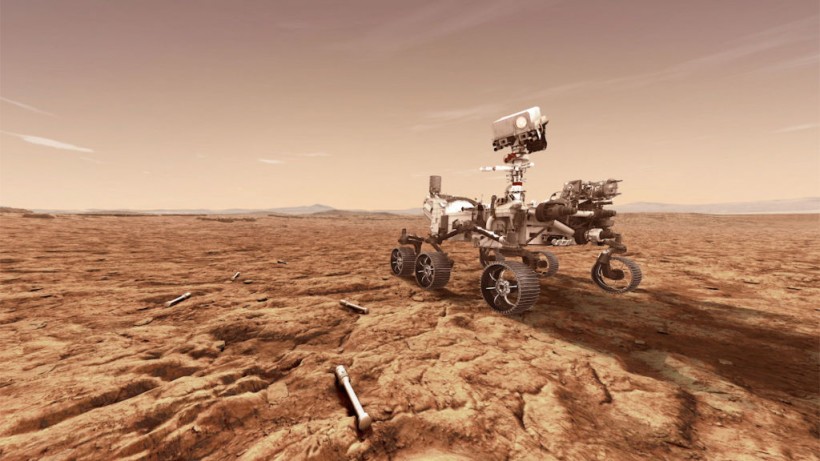The audio of NASA's newest rover crunching across the surface of Mars has been documented, bringing a whole new dimension to Mars exploration.

With NASA one day seeking to take humans to the Red Planet’s surface, and possibly beyond, the United States National Research Council Decadal Survey suggests that the space agency uses the ISS as a ‘test-bed for studying microorganisms.
A sensitive microphone carried by the Perseverance rover recorded the bangs, pings, and rattles of the robot's six wheels as they rolled through Martian terrain. However, the audio recording has an unexplained high-pitched scraping noise. Engineers are attempting to solve the dilemma.
Dave Gruel, the lead engineer for Mars 2020's EDL Camera and Microphone subsystem, said per the Associated Press that he'd pull over and call for a tow if he heard these sounds driving his car.
"But if you take a minute to consider what you're hearing and where it was recorded, it makes perfect sense," he said.
Vandi Verma, a senior engineer and rover driver at NASA's Jet Propulsion Laboratory in Southern California, said people don't know the wheels are metal when they see the photos. She explained in a statement that the rover is definitely very loud when someone is rolling on rocks with these wheels.
Perseverance, the largest and most advanced rover ever sent to Mars on Feb. 18, touched down near an ancient river delta to look for evidence of past existence. The most promising rocks will be sampled for potential return to Earth.
How The Noise Sounds Like
The sighing of Martian wind and the fast ticking sound of the instrument's laser zapping rocks were previously picked up by a second microphone, which was part of the rover's SuperCam instrument. Scientists will use this data when they search Jezero Crater for evidence of life.
The SuperCam sounds were part of a sequence of system tests performed by Perseverance. These included everything from the robotic arm's unstowing to the rover's first temperature measurements using the Mars Environmental Dynamics Analyzer.
The rover has also been looking for a suitable airfield to conduct its first flight tests with the Ingenuity Mars Helicopter. The Perseverance and Ingenuity teams are making arrangements for the rover to launch the helicopter. It would have 30 Martian days, or sols (31 Earth days), to complete up to five test flights now that the right spot has been discovered.
The EDL and SuperCam mic recordings are taking Mars down to Earth in a whole different way, Space.com said. These audio files will be used to remind models of the Red Planet's environment and assist engineers in monitoring Perseverance's fitness, according to project team members. Furthermore, the images of SuperCam's snaps will show valuable knowledge about zapped rocks, such as their hardness and whether or not they are coated.
ALSO READ: Viral Mars Perseverance Rover Video With Sound Is Fake! Here's Why
More About Mars Rover Mission
Astrobiology, including the quest for evidence of ancient microbial life, is a crucial goal for Perseverance's work on Mars. The rover will research the planet's geology and climate evolution. It would pave the way for human colonization of Mars, and be the first mission to gather and cache Martian rock and regolith (broken rock and dust).
Following NASA flights, in collaboration with the European Space Agency (ESA), the spacecraft will be sent to Mars to retrieve these sealed samples from the soil and return them to Earth for further study.
The Mars 2020 Perseverance mission is part of NASA's Moon to Mars exploration strategy, which involves Artemis lunar missions to better prepare for human discovery of Mars.
The Perseverance rover was built and is operated by JPL, which is managed for NASA by Caltech in Pasadena, California.
Perseverance will drop off an experimental tag-along helicopter called Ingenuity before it begins digging into rocks for core samples. Next month, the helicopter will attempt the first powered, operated flight on another world.
RELATED ARTICLE: Can NASA Perseverance Rover Bring Back Ambient Sound to Earth?
Check out more news and information on Space on Science Times.














